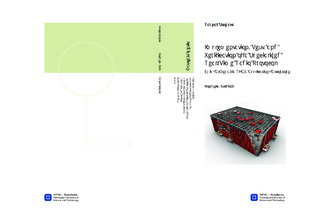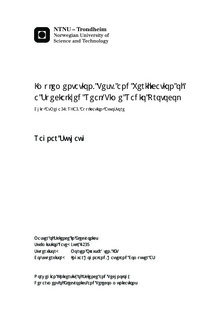| dc.description.abstract | During this thesis a specialized radio protocol has been defined, implemented, and tested. The conceptual functionality is based on a set of time synchronized access points, all operating on a different channel within the 2.4GHz ISM band. These access points will transmit beacons with a specific time offset between them, enabling listeners to continuously cycle through all channels, receiving all beacons transmitted by all access points within range. This also enables the access points to change channels at will, making the protocol very dynamic.
When a node wish to transmit it will temporarily step out of the channel cycling sequences, and access the preferred channel using CSMA/CA. If more than one channel is available, a failure to access the best one will cause it to attempt on the second best and so on. This method will cause the traffic to automatically distribute among all available channels and access points.
The nodes measures the noise on each individual channel as they cycle through them, sending regular reports to the access points. This enables the channel swaps to be made intelligently, avoiding the most noisy channels and thus automatically adapting to any interfering networks like Wi-Fi and others.
The protocol has been implemented for an AtMega128RFA1, and the protocol core has been tested and verified to work as expected. The throughput is according to theoretical calculations and the access point is able to spontaneously swap channel with minimal impact on the overall quality of service.
Some features of the protocol did not reach the needed accuracy during the implementation phase of the thesis work, still the sum of the currently observed behavior, the bugs and problems later discovered, and the set of proposed solutions to these problems, strongly indicates that the needed accuracy is well within reach. This is particularly the case with the time synchronization of the access points and the automatic detection of interference on the currently active channel.
In total the original conceptual idea has been proven to work in a real setting, giving very good results and giving strong indications that the protocol will be very well suited for the target application.
The total amount of work needed to get the full protocol, with all its features, completed proved too big for a single theses, thus the current system still needs more development, debugging, and testing before it can be used in a commercial product.
Still, as a proof of concept, and as a foundation for future work, this thesis must be said to be a great success. | |

